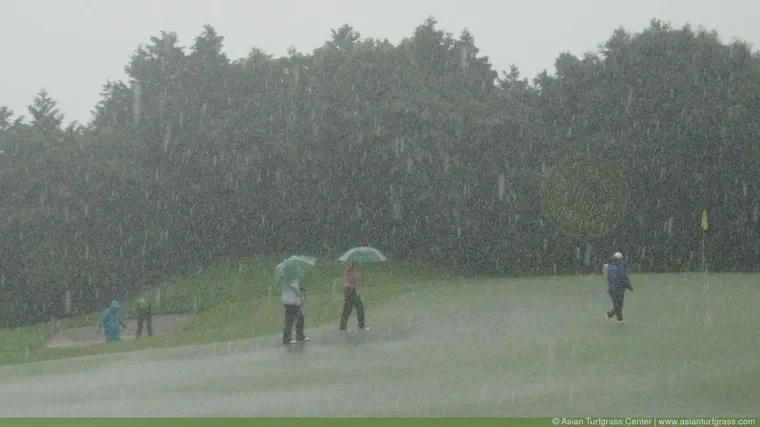Why I don't worry about infiltration rate
I understand there are a lot of different ways to manage grass. One way involves measuring infiltration rate. That’s not the way I do it.
There are eight things1 I do like to measure. Two of those—the soil water content and the total organic matter (OM246)—provide plenty of information to ensure the infiltration rate is fine.

Here are the three reasons.
1. Infiltration rate is not the goal
Infiltration rate of a turfgrass sward is the epitome of a surrogate marker. The goal is to produce a surface, not to manage the infiltration rate.
2. Measurements are too variable
In measurements of six different golf greens, and one sand-based football field measured pre- and post-season, Taylor et al. concluded in Measuring Water Infiltration Rates of Sports Turf Areas that:
Results indicated that infiltration rates measured by any ring, including the 30- and 50-cm diam. double ring, varied widely on a single golf green or athletic field. Infiltration rates measured with smaller rings used either as single or as double rings did not always correspond well with infiltration rates measured by larger double rings. Infiltration rates [measured this way] should be viewed only as rough estimates and results should be used with caution.
It is evident that soil variability, in terms of water infiltration rate, is a problem even on turf sites.
The infiltration rates measured by the smaller rings were not always indicative of the rates measured by the large double rings.
Measuring water infiltration rates on sports turf sites with water ponded in rings … is likely to give no more than a rough approximation of actual infiltration rates, certainly not sufficiently accurate to use as a criteria for irrigation system design or as a predictor of surface runoff.
3. Surface OM controls this
Changes in surface organic matter—I recommend measuring total organic matter by what I call OM246—control the infiltration rate and the capillary porosity. Glasgow et al. collected data and found an
exponential decline in surface infiltration rate as organic matter increased … This result strongly suggests it is the surface 25 mm zone that is most likely to limit the rate of water infiltration into sand-based turf rootzones.
Monitoring of soil porosity at the same sites confirmed that an organic matter content of 10% or more resulted in minimal air-filled porosity for extended periods, creating a soft, saturated surface condition.
Figures 5 and 6 from their article show how clear and consistent this relationship is.
 by Glasgow et al.](/post/why-i-dont-worry-about-infiltration-rate/glasgow2005_fig5_6_hu873518cbbb04a80bb79b2003ebdd4ec9_398496_7a29db8c3374fd025ca6898f09436fb0.webp)
The way I look at it, if there is a problem with infiltration rate, it will be obvious. The surfaces will be too wet. Rather than measuring infiltration rate, which doesn’t address the problem directly, I want to take action to fix it by reducing the organic matter at the surface. If one is already measuring soil water content and measuring OM246, the changes over time in those measures will indicate that a problem with infiltration rate might occur, and work can be done to prevent a problem before it occurs.
I explained all eight things I like to measure in the Flying Blind episode. ↩︎